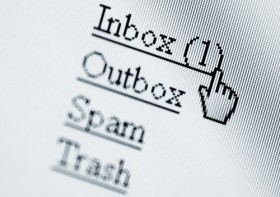A significant number of consumers actively use email as a means to communicate with both friends and family, and with brands. Moreover, the proliferation of web-enabled smartphones and tablet devices make email even more accessible—consumers no longer have to be seated in front of their computers to be reached through the communication avenue.
In fact, over the past year, the number of consumers accessing their email through mobile devices has shot up significantly. According to comScore, the use of traditional web-based email among 12-17 year-olds and 18-24 year-olds has declined significantly by 31 and 34 percent, respectively, as more consumers in this age bracket access email through their smartphones and tablets.
A separate report from Knotice highlights the growing use of mobile devices as an email platform. During the second half of 2011, the number of consumers reading emails from their smartphones or tablets hit 27 percent (up from 20 percent earlier in the year).
So what does this mean for a business? Simply that email has never been more relevant. Consumers increasingly have access to their email 24 hours a day, seven days a week, making it the perfect promotional platform for businesses to engage prospective customers. In fact, data from Forrester Research suggests email marketing budgets are expected to grow from $1.3 billion in 2010 to $2 billion in 2014, highlighting the renewed interest in the marketing channel.
And while email has experienced a resurgence in use, that doesn’t necessarily mean it’s an ace-in-the-hole that can be used to generate and convert leads with little effort devoted to them. Companies still need to put considerable effort into their email marketing efforts to ensure each message is being made relevant to the person receiving it. In that regard, personalization and segmentation have never been more pivotal
Personalizing Email Content
The perks of customized, personalized marketing campaigns should be apparent. When consumers receive email messages that have been made specifically for them, featuring products or services they are interested in, they are also more likely to convert. It’s a simple matter of packaging content in a way that maximizes the sender’s chances of success.
A cookie cutter message will never cut through the clutter like a personalized message. Flickr: antefixus21
Surprisingly though, few companies use personalized emails for whatever reason. A recent whitepaper issued by Experian suggests that as many as 80 percent of businesses simply send the same content to everyone on their email list, regardless of where they are located and what specific needs they have as a prospect.
This is a poor marketing practice because it treats customers like numbers in a database. When people give their email address to a company, they do so because they expect to receive value from a brand. Generic, uncustomized content betrays that understanding. Despite this, many companies send cookie-cutter messages anyways – and this is in light of the fact that 59 percent of B2B marketers believe email is the most effective channel for generating revenue, a BtoB Magazine report highlights.
Using Fision to Customize Content
Fision can help companies get away from sending unspecific emails by offering a robust, easy to use email customization solution. Our distributed marketing platform enables chief marketing executives to set up brand-compliant and pre-approved guidelines, templates and assets that can be used by sales representatives, dealers and remote offices to create email marketing content that is tailor made for prospects and leads.
With Fision, companies can empower their ground-level partners by enabling them to send the right message to the right audience without jeopardizing brand relevancy.
